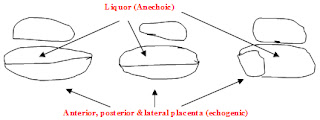Adult Cardiopulmonary Resuscitation
Introduction
Cardio-respiratory arrest is
cessation of mechanical activity of the heart. It is a clinical diagnosis
evidenced by unresponsiveness, apnoea or agonal respirations and absence of a
detectable central pulse. Immediate and systematic action is essential to
prevent death or permanent cerebral damage.
Survival after cardiac arrest out
of hospital is extremely low. Coronary artery disease is the commonest cause for
sudden cardiac arrest, affecting nearly 700,000 people a year in Europe and one third of people developing a myocardial
infarction die before reaching the hospital. The commonest presenting rhythm is
rapid ventricular tachycardia or ventricular fibrillation. In the absence of
immediate bystander initiated cardio-pulmonary resuscitation this deteriorates to
asystole.
In- hospital cardiac arrest
occurs in a sicker group of patients and only 20% of them will survive to leave
the hospital. The presenting rhythm is either asystole or pulseless electrical
activity.
Causes of
cardiac arrest
Cardio-pulmonary arrest may occur
due to airway obstruction, breathing inadequacy or cardiac abnormalities.



